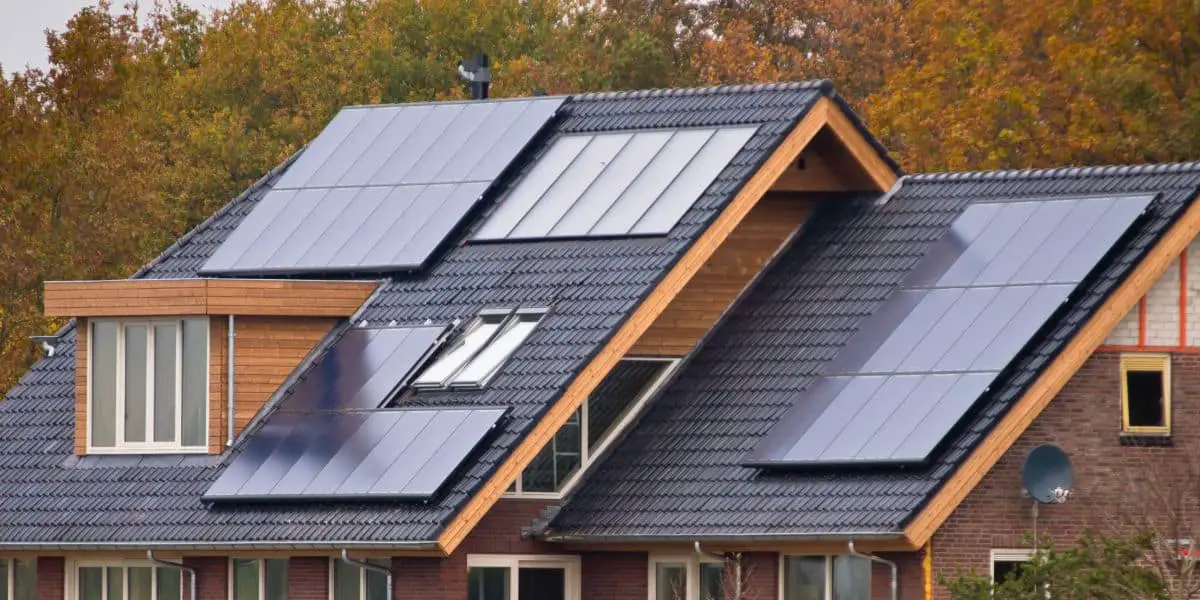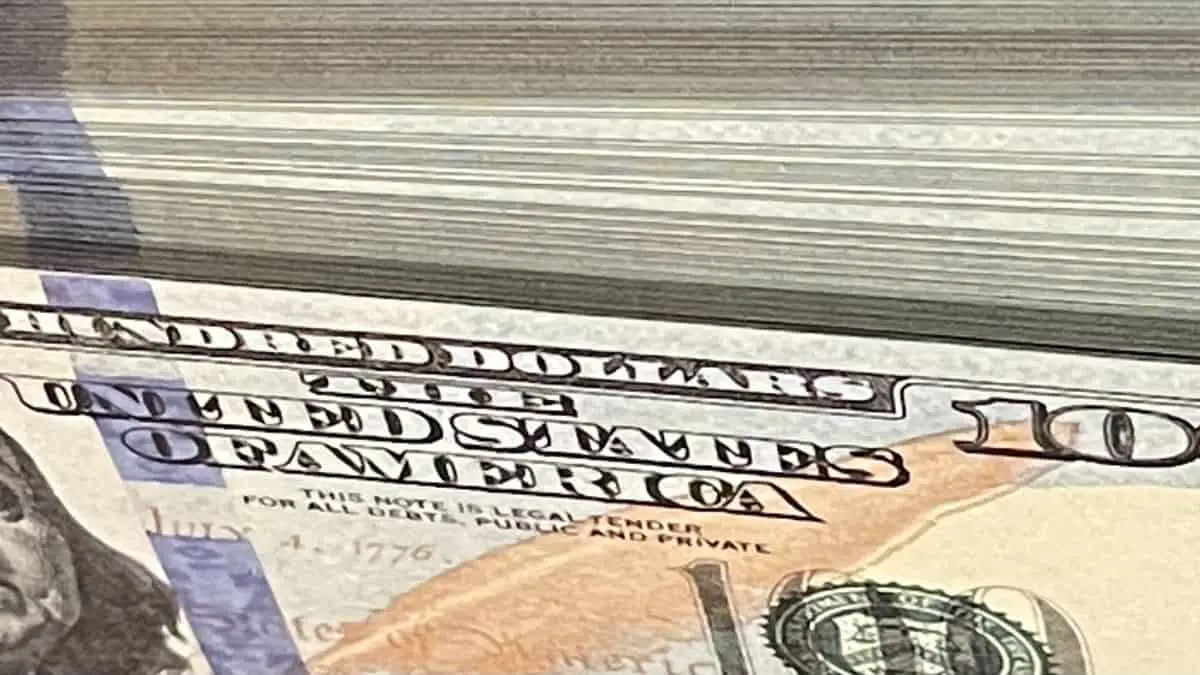Are you feeling overwhelmed by the seemingly complex world of electric vehicle (EV) incentives in California? Believe me, I’ve been there too and it took some digging into facts like how California has allocated over $1.84 billion to three EV incentive programs since 2010: Clean Cars 4 All Program, Clean Vehicle Rebate Project, and the Clean Vehicle Assistance Program.
In this blog post, I’ll simplify this web of information about zero emission vehicle tax credits and guide you through all available opportunities to save on your next green car purchase.
Key Takeaways
- California offers substantial financial incentives for individuals looking to purchase zero-emission vehicles (EVs or Fuel Cell) through its Clean Cars 4 All program.
- Strictly speaking, there is no zero-emission vehicle tax credit in California. Instead the incentive comes in the form of a rebate.
- Under the Clean Vehicle Rebate Project, eligible buyers can receive rebates ranging from $2,000 to $7,500 for zero-emission battery electric vehicles.
- These incentives are not limited to high-income individuals, as California has increased rebates specifically targeting low and middle-income households.
- In addition to state-level incentives, there are also federal tax credits available that can provide up to $7,500 in savings when purchasing an EV.

Understanding The Zero Emission Vehicles Included
It’s helpful to understand the different types of Zero emission vehicles, including battery electric vehicles, hydrogen fuel cell vehicles, and zero-emission motorcycles, when investigating financial incentives for their purchase.
Battery Electric Vehicles
Battery Electric Vehicles (BEVs) run solely on electricity and need recharging.
Under the expanded Clean Vehicle Rebate Project, California residents who purchase an eligible BEV could receive a rebate of up to $7,500. This substantial incentive is part of California’s endeavor to transition from polluting vehicles, thereby improving air quality and reducing our carbon footprint.
Moreover, it aids low- to moderate-income Californians in embracing electric mobility solutions that can yield significant fuel savings over time.
Hydrogen Fuel Cell Vehicles
Hydrogen Fuel Cell Vehicles (FCVs) function by converting hydrogen gas, into electricity that powers an electric motor.
Unlike battery-electric vehicles which require charging stations for power, FCVs generate their own electricity. The only emission? Water vapor.
The State of California is leading the charge in promoting this green technology. In fact, it’s one of only two states in the U.S pioneering hydrogen refueling infrastructure on our roads today—the other being Hawaii.
As part of its clean-car incentive programs like the Clean Vehicle Rebate Project overseen by the Air Resources Board, eligible FCV buyers can receive rebates ranging from $750 to $7,000 depending upon income level and eligibility criteria.
Coupled with additional tax credits at a federal level, driving away with a new FCV can be financially easier than ever before!
Plug-in Hybrid Electric Vehicles
Plug-in hybrid electric vehicles (PHEVs) offer you the best of both worlds. These cars operate on a combination of gas and electricity, providing you with greater flexibility and peace of mind during longer journeys.
But here’s the cherry on top: PHEVs are not ZEVs but still qualify for significant California EV incentives like the Clean Vehicle Rebate Project (CVRP).
Your commitment to green energy could save you serious cash, considering that plug-in hybrids now attract an increased rebate from $3,500 to a whopping $6,500 under CVRP!
There’s more good news for your pocket as well, just as in the case of EVs or FCVs; federal tax credits are also available for eligible buyers which can provide up to $7,500 in additional savings.
Zero-Emission Motorcycles
Zero-emission motorcycles are battery electric vehicles, that require recharging.
As part of the Clean Vehicle Rebate Project, California offers rebates for zero-emission motorcycles to make them more accessible and affordable for consumers.

California EV Incentives For Low And Moderate Income Individuals
The state of California offers generous incentives for low and moderate income individuals to encourage the adoption of electric vehicles (EVs). These incentives aim to make EV ownership more accessible and affordable for those who may face financial challenges.
Under the Clean Vehicle Rebate Project (CVRP), eligible individuals can receive substantial rebates when purchasing or leasing a qualifying zero-emission vehicle.
Here’s what you need to know: The CVRP provides increased rebates for battery-electric vehicles, plug-in hybrid vehicles, and fuel cell EVs. The rebate amounts have recently been significantly boosted, with battery-electric vehicles now eligible for up to $7,500 in rebates, plug-in hybrid vehicles qualifying for up to $6,500 in rebates, and fuel cell EVs receiving up to $7,500.
| Type of Vehicle | Previous Rebate | New Rebate |
|---|---|---|
| Battery Electric Vehicles | $500 | $7,500 |
| Plug-in Hybrid Electric Vehicles | $3,500 | $6,500 |
| Fuel Cell EVs | $500 | $7,500 |
These changes, approved in November last year, are a crucial part of a $2.6 billion plan for the fiscal year 2022-23. Tailored to help those facing economic or environmental challenges, this plan is expected to benefit over 70% of California’s priority population.
To be eligible for these increased rebates under the new guidelines approved in November, your household income must be less than or equal to 400% of the federal poverty level.
These enhanced incentives are part of California’s commitment to making clean transportation options accessible and affordable for all residents while also moving towards a greener future.
So if you’re considering transitioning from a gas-powered vehicle to an electric one, now is an excellent time to take advantage of these fantastic incentives designed specifically for low and moderate-income individuals like yourself.
Tools For California Car Buyers To Look Up EV Incentives
Finding out about EV incentives in California is easy with the following tools:
- Clean Vehicle Rebate Project (CVRP) Website: The CVRP website provides comprehensive information on available EV incentives, eligibility requirements, and how to apply for rebates. You can explore the website to find details about specific vehicles and the amount of rebate you can receive.
- The list of eligible clean vehicles for the Clean Vehicle Rebate, on the CVRP website.
- The Clean Vehicle Assistance Program website: this program provides loans and grants to income-qualified Californians.
- California Air Resources Board (CARB) Website: CARB’s website offers resources related to California’s efforts to reduce air pollution and promote clean vehicle adoption. It provides information on current incentive programs, including EV rebates, and allows you to search for eligible vehicles.
- U.S. News Best Price Program: This program helps car buyers find the best prices on new and used EVs. By using this tool, you can compare prices from local dealerships and take advantage of pre-negotiated discounts.
- Online Sales Options: Many automakers now offer online sales options for ordering electric vehicles. By visiting the official websites of car manufacturers like Tesla or Audi, you can explore available models, configure your vehicle according to your preferences, and check if any special offers or incentives are available.
Overview Of The Clean Vehicle Rebate Project’s Incentives
I’ve always been impressed with the Clean Vehicle Rebate Project (CVRP) in California because it offers some great incentives for individuals looking to purchase electric vehicles (EVs). Through the Zero Emission Vehicle Tax Credit, the CVRP provides rebates ranging from $2,000 to $7,500 for zero-emission battery electric vehicles.
This is potentially a significant amount of money back in your pocket when making the switch to an EV.
What’s even better is that there are a wide variety of eligible vehicles for the CVRP rebate. Popular electric vehicle manufacturers such as Tesla, Audi, BMW, Chevrolet, Ford, Hyundai, Kia, Lexus, Mazda, Mercedes Benz, MINI, Nissan, Subaru, Toyota, VinFast, Volkswagen, and Volvo all have models that qualify for these incentives.
So whether you’re interested in a sleek Tesla Model 3 or a more modest Volkswagen ID.4, this rebate program will effectively increase your budget so that you can find a vehicle that suits your needs.
But here’s what really sets the CVRP apart: it’s not just limited to high-income individuals. In fact, California has increased rebates specifically targeting low-income and middle-income households.
This means that more people than ever before can afford to make the transition from gas-powered vehicles to cleaner electric ones without breaking their budget.

Federal Tax Credits: What You Need To Know
When purchasing an electric vehicle in California, it’s important to understand the federal tax credits available. The Federal Electric Car Tax Credit program 2023 offers buyers of eligible electric vehicles a potential tax credit of up to $7,500.
This credit is applied directly against your federal income tax liability and can help offset the cost of purchasing an EV.
It’s important to note that these tax credits are offered on a first-come, first-served basis and are subject to certain conditions. To qualify for the full $7,500 credit, your new electric vehicle must have a battery capacity of at least 16 kWh.
However, smaller battery-capacity models may still be eligible for a reduced credit amount. Additionally, it’s crucial to check with your accountant or tax advisor to understand how this credit will apply to your specific situation. There may be limitations imposed when applying for both incentives.
By taking advantage of these federal tax credits, you can significantly reduce the overall cost of owning an electric vehicle in California.
Additional California EV Tax Credits
In addition to the Clean Vehicle Rebate Project’s incentives, California offers several other tax credits for electric vehicle (EV) owners. These include tax credits for purchasing used EVs, home charging station installations, and even solar panel installations.
Used EV Purchase Tax Credits
California also provides tax credits for the purchase of used electric vehicles (EVs)..
| Tax Credit Details | Eligibility |
|---|---|
| The program offers a tax credit of up to $2,500 on the purchase of used EVs. | To be eligible, you must meet income qualifications and purchase a qualifying EV. |
| The vehicle must be registered in California and primarily used in the state for at least 30 months. | California residents who meet the income criteria set by the program. |
| The vehicle must be more than two years old to qualify. | Only second owners or subsequent owners of the vehicle can claim the credit. |
| The credit is only available while funds last. | Early applications are encouraged due to the limited availability of funds. |
However, potential buyers should consider potential challenges like program funding limitations. These funding shortages resulted in the closure of waitlists earlier this year, making it more difficult for lower-income residents to access the much-needed subsidies.
Home Charging Station Installation Credits
Installing a home charging station for your electric vehicle in California doesn’t just make owning an EV more convenient — it could also qualify you for some generous tax credits.
| Home Charging Station Tax Credit Details | Amount | Additional Incentives (For Low/Moderate Income) |
|---|---|---|
| California Home Charging Installation Rebate | Varies by utility company | Extra rebates up to $2,500 for low/moderate income individuals |
| South Coast Air Quality Management District Rebate | $250 | N/A |
| Federal Alternative Fuel Infrastructure Tax Credit | 30% of the cost, up to $1,000 | N/A |
It’s crucial to remember that these credits and rebates are subject to availability and program limitations. Ensure to check with your utility company and local air quality management district for the latest details.
With these incentives, the cost of installing a home charging station can be significantly offset, making the switch to an electric vehicle a more affordable and convenient choice.

Solar Panel Installation Credits
Solar Panel Installation Credits are another attraction for environmentally conscious consumers looking to reduce their carbon footprint in California. These credits offer financial incentives for installing solar panels that can power a residential home and zero-emission vehicles.
| Credit Type | Credit Value | Eligibility | Expiration |
|---|---|---|---|
| Federal Solar Tax Credit (ITC) | 26% of the cost of the system | Residential and commercial systems installed before December 31, 2022 | Steps down to 22% in 2023, and 10% in 2024 |
| California Solar Initiative (CSI) Thermal Program | Up to $2,719 for single-family homes | Existing homes that replace an electric water heater | Open until funds are depleted |
| Net Energy Metering (NEM) | Varies based on the amount of electricity you feed back into the grid | Homeowners with solar panel systems | Program details vary by utility company |
| Property Assessed Clean Energy (PACE) | Financing for up to 100% of the project cost | Homeowners who install solar panels or make other energy-efficient improvements | Varies by program |
Not only do these incentives help reduce the initial cost of solar panel installation, but they also lead to significant savings on energy bills in the long run.
Other Available EV Incentives In California
Apart from the well-known California EV tax credits, you can also explore other incentives that are equally significant if you are a prospective EV buyer in California.
| Incentive | Description | Benefits |
|---|---|---|
| Utility EV Rebates | Several utilities in California offer rebates to their customers who buy or lease an EV. | These rebates can range from $500 to $1,000, making EV ownership more affordable. |
| Free or Discounted Charging | Some utility companies offer free or discounted charging during off-peak hours. | This can significantly reduce the fueling costs of your EV. |
| Single-Occupant Carpool Lane Access | California allows qualified EVs to use the carpool lane, even if there’s only one person in the car. | This can save you a lot of time during rush hour traffic. |
| EV Parking Benefits | Several cities in California offer free or discounted parking for EVs. | This can save you money and make it easier to find parking in busy areas. |
| EV Car Sharing and Rental Programs | These programs offer affordable access to EVs without the need to buy or lease. | This can be a good way to test out EV ownership before making a commitment. |
So, make sure you’re aware of these incentives to make the most of your EV ownership in California.
Potential challenges in claiming California EV incentives include limited program funding, vehicle inventory shortages, and charging station availability.

Program Funding Limitations
Despite having invested $2 billion on the funding of incentives for clean vehicle purchases, state funding may insufficient, forcing programs to close down or stop albeit temporarily.
This especially affects lower-income buyers and often means that they can’t purchase a clean vehicle. Furthermore, California’s emissions improvement targets are then jeapordized.
Vehicle Inventory Shortages
Due to high demand and limited supply, vehicle inventory shortages can pose a challenge for individuals looking to claim California EV incentives. Here are some key points to understand about the issue:
- Dealerships often struggle to keep up with the increasing demand for zero – emission vehicles, resulting in limited availability.
- High-demand models such as Tesla’s Model 3 and Model Y may have longer waiting lists due to their popularity.
- A further problem exacerbated by the high-demand low-supply situation is that many dealers have pushed prices up significantly.
- The lack of inventory and high prices have caused some participants in California’s EV incentive programs to give up the state money they qualified for, hindering the transition to zero-emission vehicles.
- Nonprofit organizations are negotiating with dealers to lower used car prices for qualifying individuals, addressing the inventory problem within equity programs.
Conclusion
In conclusion, the California Zero Emission Vehicle rebate program is a crucial incentive that aims to make electric vehicles more accessible and affordable for low and moderate-income individuals.
You may well be eligible for a rebate on your purchase of a zero-emission vehicle, EV, fuell cell vehicle, or plug-in hybrid. If you are eligible or not, and the amount you may get, are dependent on various factors that are beyond the scope of this blog post.
Refer to the helpful links provided above such as the Clean Vehicle Rebate Project website, and also seek professional advice to get the precise information corresponding to your case.
Remember that besides the rebate, there also exists the possibility of getting a loan or a grant if you qualify, from the Clean Vehicle Assistance Program.
By supporting initiatives like the Clean Vehicle Rebate Project and implementing additional tax credits, California can continue to lead in sustainable transportation and combat climate change.
FAQs
What is the California Zero Emission Vehicle Tax Credit?
The California Zero Emission Vehicle (ZEV) Tax Credit is a program that offers financial incentives to individuals and businesses who purchase or lease eligible zero emission vehicles, such as electric cars, hydrogen fuel cell vehicles, and plug-in hybrids.
How much is the tax credit for purchasing a zero emission vehicle in California?
The amount of the tax credit varies depending on several factors, including the type of vehicle and its battery capacity. Currently, the maximum credit available for most eligible vehicles is $7,000.
Who qualifies for the California ZEV Tax Credit?
To qualify for the California ZEV Tax Credit, you must meet certain criteria set by the state government. Generally, individuals who purchase or lease new eligible zero emission vehicles are eligible for the tax credit.
How can I claim the California ZEV Tax Credit?
To claim the California ZEV Tax Credit, you will need to complete Form 8936 (Qualified Plug-in Electric Drive Motor Vehicle Credit) when filing your federal income tax return. You should consult with a qualified tax professional or refer to IRS guidelines to ensure you meet all requirements and properly claim the credit.
- Tesla Charger Installation Cost (Home Setups) - March 1, 2024
- Tesla Phone Key Disconnected (Troubleshooting Guide and Quick Fixes) - March 1, 2024
- Tesla FSD 12 (Explained) - March 1, 2024